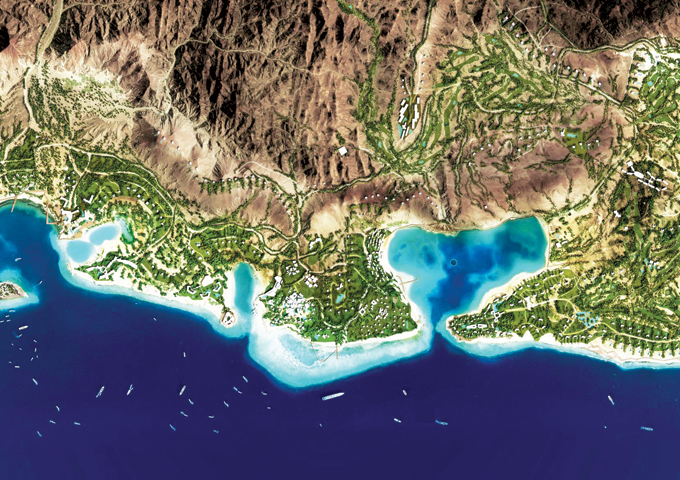The term ‘wellness’ has been so abused that it has become meaningless today, says eminent spa industry icon Sue Harmsworth.
Also, read on to discover what will it take to increase the ROI on spas within a hospitality project and the future of the segment
The cure for wellness

“I’m starting to hate the word wellness because it’s become so generic it’s utterly confusing the consumer, she tells Beth McGroarty, GWI VP of research and forecasting, in an interview. “Everything is labelled “wellness”: You go to the supermarket, and you’re overwhelmed. We need new terms and definitions–and as an industry, we don’t challenge ourselves enough to be clear with consumers. It’s becoming a real issue with social media moving so fast and so much copying going on.”
“The history of wellness and spa–and the regional differences–add to the confusion. What we think of as ‘wellness’–all the ancient medical traditions from TCM to Ayurveda; amazing, centuries-old “kurs” at European health farms; the hydrothermal piece; advanced massage techniques–these existed forever before modern ‘wellness’ was born in the spa industry in the 90’s.
“We need new terms and definitions – and as an industry, we don’t challenge ourselves enough to be clear with consumers. It’s becoming a real issue with social media moving so fast and so much copying going on”
– Sue Harmsworth
“As the spa industry took off, the word and concept became confusing, and it has to do with what the US means by it versus the rest of the world. In the US, every beauty salon, or every two treatment rooms by a pool, suddenly became a ‘spa’–not what I, as a European, would call one. When the spa movement became powerful in the 90’s, stress was the overwhelming focus. The world was changing: Women were going back into the workforce, flying constantly became the norm, and technology was taking over the world. Stress was the huge issue, and most spas were built for relaxation–from massages to meditation. What I would call “light wellness”–with no negative connotations.
“But now, we have a much more complex set of modalities and advanced practitioners at wellness destinations. We have fitness/sports, a much more serious nutrition and microbiome piece, spa, complementary medicine, and beauty–but aesthetics as in both medicine/machines and more non-invasive approaches. And we have more medical or “serious” wellness. But there can be confusion around “medical wellness” for consumers: They may think it means traditional allopathic medicine and ask, why would I go to an expensive resort when I can do the same things with a specialist? The future of medicine at destinations is functional medicine and preventative, advanced testing and diagnostics: whether hormone analysis, 3D scanning analysing bone density, muscle mass and visceral fat, or microbiome and nutrition testing. All to create a personalised health plan.
“So, you have “light wellness,” which spas and hospitality destinations have excelled at. You have medical or “serious” wellness, but it’s different this time around: It’s preventative, functional medicine and diagnostics. That’s why I’m so keen on new definitions and distinctions: “Wellness” is too imprecise to mean anything. People have got to focus on what their consumers want and get clear about what they’re delivering.”
Operators and investors have struggled to get even the ROI of a spa in a hotel project. What needs to change to pull off these far more ambitious integrative wellness destinations?
“First, it’s going to take an entirely new operating model and type of operator. There’s lots of great operators on the clinic side I could run through some of the big names from Lanserhof to SHA, but they’re not as integrated as I think the future will be, and I don’t think there’s an operator out there right now with this forward-thinking, bring-it-all-together approach.
“We need to remember that, historically, spas–outside the US–haven’t been particularly profitable. That’s because the hotel model is to view every department as a completely standalone profit centre, so they isolate a spa’s costs and revenues (staffing, utilities, laundry, etc.), so it often doesn’t show a good ROI–and also, unless you have a hotelier or developer who really gets it, they haven’t been spending the capital on spas that would let them actually see the ROI.
“In the US, developers who’ve been building shopping malls and condos typically don’t understand spas at all: they think narrowly in terms of square-foot return on investment. But this will change: The hospitality industry is recognizing the importance of health and wellness to the consumer, and that means everything: nutrition/menus, lighting, air and water quality, sleep quality, a great spa/wellness centre.
“What operators need to learn is that you’ve got to turn the model on its head. It’s much easier to make an integrative wellness resort profitable because the medical diagnostics and medical-aesthetics areas (while the practitioners are much more expensive) can be hugely profitable, far more so than any spa. Integrative wellness resorts will have a whole different profit and loss model than the departmental formulas of hotels: You will look at the bottom-line profit across all departments, where all is wellness (rooms, F&B, spa, medical services, aesthetics, etc.) It’s one pot; they will be very profitable, even if there is a loss leader.
“Second, we need to build destinations broad enough so the consumer can do different things at different times. Most people that want a vacation want wellness: to eat right; to have stimulating, healthy things for kids (cooking classes, foraging, sailing–not some boring Kids Club)–but they want to relax, have a few drinks, have fun. On the other extreme, some people need much more: You’ve had cancer or put on 20 pounds, etc. You want the strictness and deeper functional medicine of a medical-wellness environment to do something more intensive, often alone. And then desires fall everywhere in-between. More healthy people now want to assess their life once or twice a year for preventative reasons: to be the best at every stage of their life, to pick up the little things before the big things happen. Like me, they start seeking prevention in their 20s and 30s. This is all much broader than what’s come before. And if you can bring it all together without confusion, it’s going to make money. For sure.
“This is a design issue and one I’m right in the middle of with my projects. Most medical spas have been quite small (say, 50 bedrooms). To achieve this new integrative model, the resorts are going to have to be bigger, and the whole nature piece will be enormous: the great outdoors, a warm enough climate, and the quality of the air. It’s about creating a place that can have paths that run from fun and families to the more serious, preventative stuff.
“Third, it will be much easier to make an integrative wellness resort stack up financially with the residential component.
“I’m working on the Amaala project on Saudi Arabia’s Red Sea, spearheaded by their ruler, Prince Mohammad bin Salman bin Abdulaziz Al-Saud, a wellness resort and community at the ultra-high-net-worth end. It’s set on 435 miles of coastline and will integrate everything from advanced medicine to comprehensive wellness approaches–and many of the main wellness brands will be there. It’s an interesting example of designing for different needs and guests, with both an integrative wellness resort for adults and another for families.”
* Excerpts from an interview conducted by Beth McGroarty, VP of research and forecasting, Global Wellness Institute
